What's the Smallest Audio File Format? Top Choices for Every Use
In an age where storage space and bandwidth are at a premium, choosing the smallest audio file format without sacrificing too much quality is more important than ever. Whether you're a musician, podcaster, or casual listener, understanding which smallest audio format fits your needs can save you gigabytes of space and ensure smooth streaming. This guide breaks down popular formats, reveals the smallest audio file contenders, and helps you pick the right option for every application.
Part 1: Types of Audio File Formats
Audio file formats fall into three main categories: uncompressed, lossless compressed, and lossy compressed, each balancing sound fidelity against file size. By understanding these types, you'll grasp why some formats yield the smallest music format files, while others prioritize pristine audio quality.
- 1. Uncompressed formats (e.g., WAV, AIFF)retain intact audio data with the best sound quality, but are large in size.
- 2. Lossless compressed formats (e.g., FLAC, ALAC)reduce file size without quality loss, but still larger than lossy formats.
- 3. Lossy formats (e.g., MP3, AAC)achieve the smallest audio file sizes by removing some audio data, compromising quality for efficiency.
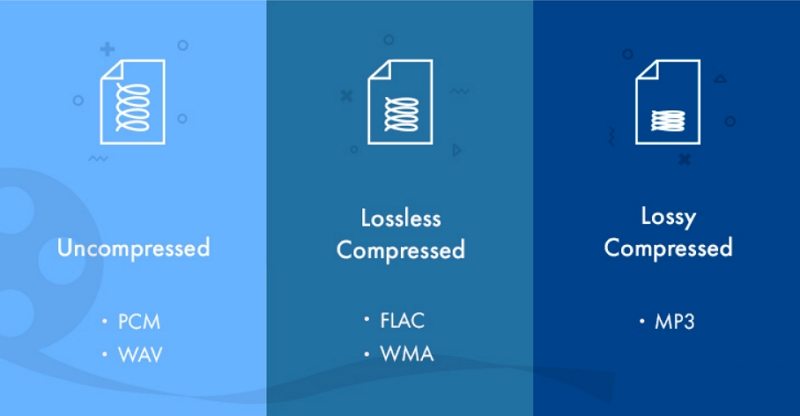
Part 2: What's the Smallest Audio File Format?
When hunting for the smallest audio file format, lossy compression leads the pack. These formats discard inaudible data to shrink file sizes dramatically. Below, we examine five popular lossy formats renowned for producing the smallest audio format outputs.
1. MP3
MP3 has long been the most popular lossy audio format due to its small file size and good sound quality. MP3 files can retain high sound fidelity by compressing audio while drastically reducing their size. You can adjust its bitrate from 32 kbps to 320 kbps, with lower bitrates resulting in smaller files but a loss in sound quality. It is ideal for music, podcasts, and audiobooks and is supported on virtually all devices and platforms.
Why it's small: Bitrate control down to 32 kbps yields minimal file sizes.
Use cases: Music streaming, portable music players, audiobooks.
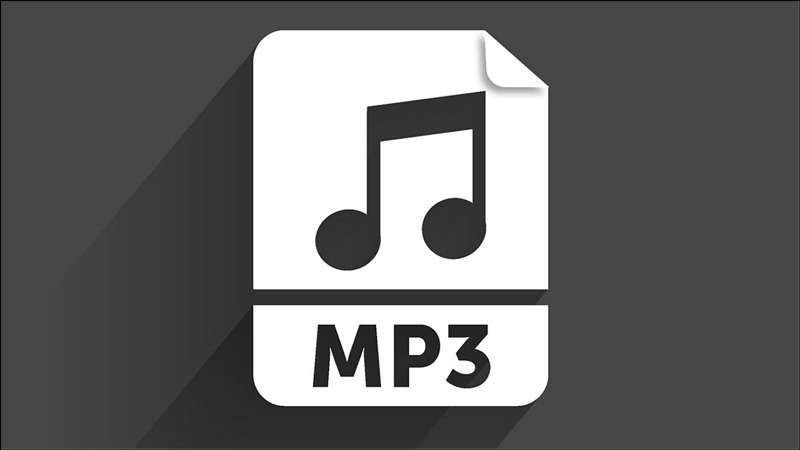
2. AAC
AAC is another lossy compression format often preferred over MP3 due to its improved audio quality at lower bitrates. It is commonly used in streaming services or music on mobile devices. With bitrates from 64 kbps to 320 kbps, AAC is the default format for many modern audio players and Apple devices, making it highly compatible with iTunes, iPods, and other Apple products. AAC is known for its better sound quality at the same bitrate as MP3.
Why it's small: More efficient encoding than MP3 at equivalent bitrates.
Use cases: Apple ecosystem, streaming platforms, mobile listening.
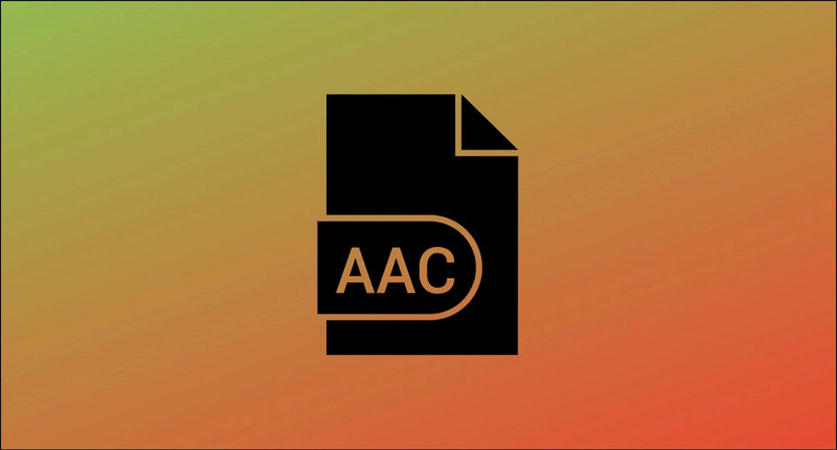
3. OGG Vorbis
OGG Vorbis is an open-source, lossy compression audio format with bitrate options from 40 kbps to 500 kbps. It is an excellent choice for higher audio quality than MP3 at similar or smaller file sizes. Although it's not widely supported on all devices like MP3 and AAC, OGG is still popular among gamers, audiophiles, various media players, and streaming platforms that want to avoid proprietary formats.
Why it's small: Highly efficient open codec with fine-grained bitrate control.
Use cases: Gaming audio, open-source projects, niche streaming.
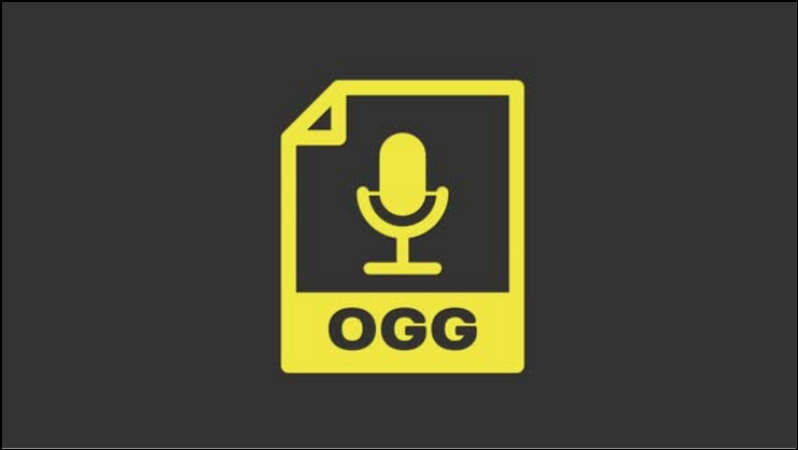
4. Opus
Opus is a relatively newer lossy format designed specifically for voice and music. It offers superior audio quality at very low bitrates, making it ideal for VoIP calls, audio streaming, podcasting, and low-latency apps. Based on audio content, it dynamically adjusts the bitrate from 6 kbps to 510 kbps, which allows it to maintain high sound quality even at low bitrates. It is supported by many modern web browsers, media players, and communication tools.
Why it's small: Adaptive bitrate algorithm optimizes for content type.
Use cases: VoIP, live streaming, web audio, podcasts.

5. WMA
WMA is a proprietary lossy audio format developed by Microsoft, supporting bitrates from 48 kbps to 192 kbps. It offers efficient compression with smaller file sizes than MP3, though its support is limited to Windows users or streaming. These files can achieve better audio quality at lower bitrates, making it a good option for users within the Windows ecosystem and some media players.
Why it's small: Microsoft's codec optimizes size at moderate bitrates.
Use cases: Windows Media Player, Microsoft services.

Part 3: Best Audio Format by Content Type
Choosing the smallest music format isn't just about raw file size-it also depends on your content type and distribution channel. Below are tailored recommendations for social media, podcasts, YouTube, music production, and live streams.
1. Best Audio Format for Social Media
Social platforms favor formats that balance compatibility with quick loading. MP3 at 128 kbps often hits the sweet spot: small enough for fast uploads, yet clear enough for short clips and stories.
2. Best Audio File Format for Podcast Episodes
Podcasts benefit from spoken-word clarity over musical fidelity. AAC at 64-96 kbps yields crisp voice quality with minimal file size, ensuring listeners can stream or download episodes quickly.
3. Best Audio File Format for YouTube
For strictly audio files, YouTube supports MP3, WAV, AAC, and FLAC files. For the best listening experience, creators should consider FLAC and WAV audio formats. To circumvent potential compatibility hurdles while editing and publishing, MP3 may be the best audio file format for YouTube content.
4. Best Audio File Format for Music Production
Music production demands lossless quality for editing. WAV or AIFF (uncompressed) is standard during mixing and mastering, ensuring no data loss. Final masters can be archived in FLAC to save space without quality compromise.
5. Best Audio File Format for Live Streams
Live streaming requires low latency and consistent bitrate. Opus at 64-128 kbps excels here, offering real-time adaptability and clear audio even under fluctuating network conditions.
Part 4: Tips for Choosing the Right Audio Format
Selecting the smallest audio file format involves weighing multiple factors-sound quality, file size, compatibility, and intended purpose. Below are key considerations to guide your decision:
- Sound Quality: Determine acceptable quality loss-voice-only content can tolerate lower bitrates than music.
- File Size: Assess storage or bandwidth constraints. Lower bitrates yield smaller files but risk artifacts.
- Compatibility: Ensure your target devices and platforms support the format-MP3 and AAC boast universal support.
- Purpose:Tailor your choice to use case: podcasts, music production, streaming, or archival.
Bonus Tip: How to Convert Audio to the Smallest Audio Format
Converting audio to the smallest audio file format doesn't have to be complex. HitPaw Univd is an all-in-one music converter and editor that simplifies the process. With its intuitive interface and robust feature set, you can quickly transform large WAV or FLAC files into compact MP3, AAC, OGG, or Opus formats-ideal for sharing or archiving without breaking a sweat.
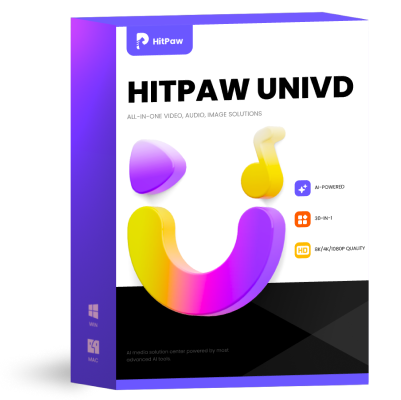
HitPaw Univd - All-in-one Video Solutions for Win & Mac
Secure Verified. 254,145 people have downloaded it.
- Batch conversion of multiple audio files in one click.
- Supports over 1000 formats including MP3, AAC, OGG, and Opus.
- Customizable bitrate settings from 64 kbps to 320 kbps.
- Built-in audio editor for trimming and merging tracks.
- High-speed conversion powered by hardware acceleration.
- Preserves metadata tags like artist, album, and cover art.
Secure Verified. 254,145 people have downloaded it.
Step 1:Install HitPaw Univd on your computer after downloading and start the software. Launch the software and navigate to the "Converter" tab. Click on the "Add Audio" button to import the audio file.

Step 2:To convert audios to other formats, tap on the "Convert All to" button to choose the format you're willing to convert the audio into.

Step 3:After selecting the audio format, press the "Convert All" icon to get the music converted. In the next phase, you can access the converted audios from the "Converted" tab.

Conclusion
Choosing the smallest audio format boils down to understanding your priorities: ultimate quality, minimal file size, or broad compatibility. Lossy formats like MP3, AAC, OGG, Opus, and WMA lead the pack in producing the smallest audio file sizes, each with unique strengths. By matching format to content-be it social media clips, podcast episodes, YouTube uploads, or live streams-you can optimize storage and bandwidth without sacrificing listener experience. And with tools like HitPaw Univd, converting to your ideal format is both effortless and efficient.


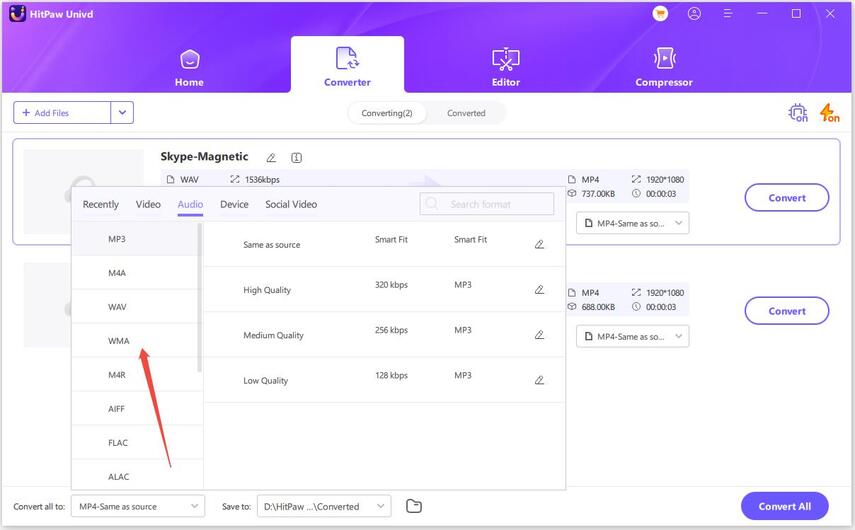
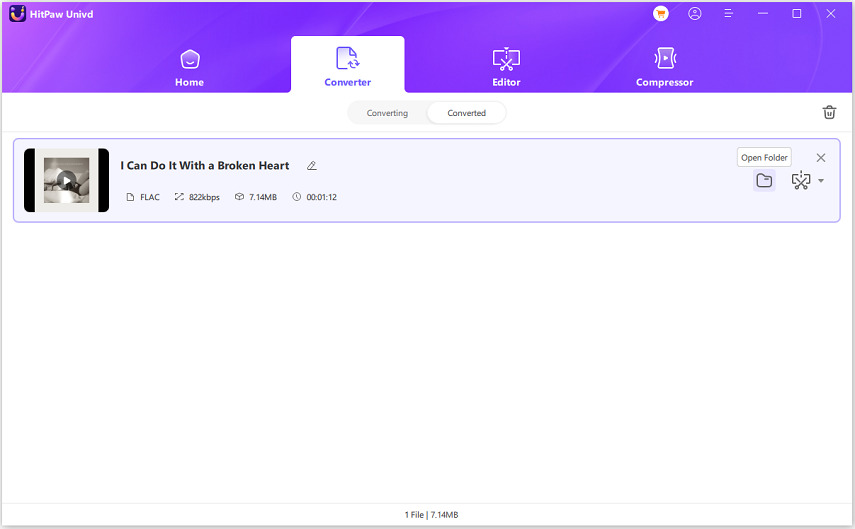





 HitPaw VoicePea
HitPaw VoicePea  HitPaw VikPea (Video Enhancer)
HitPaw VikPea (Video Enhancer)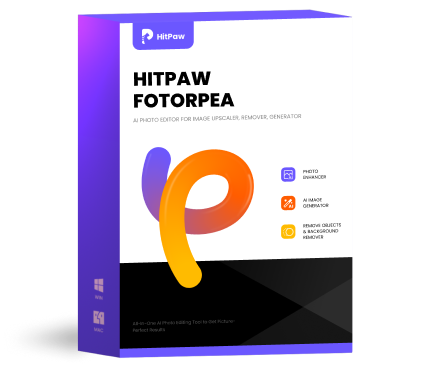 HitPaw FotorPea
HitPaw FotorPea
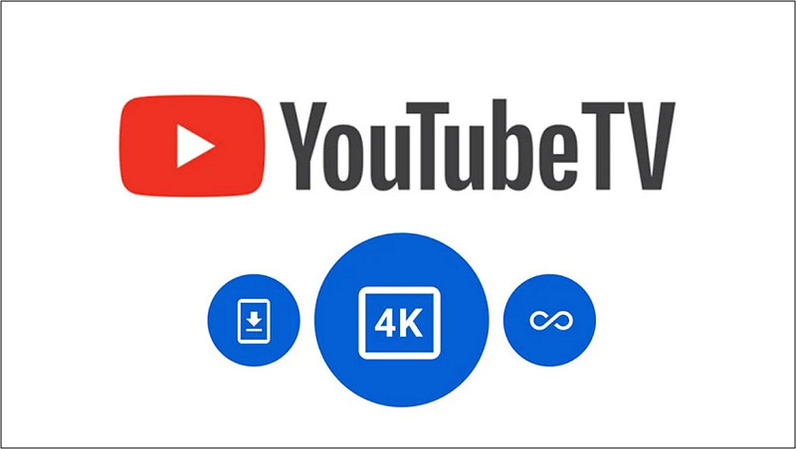


Share this article:
Select the product rating:
Daniel Walker
Editor-in-Chief
My passion lies in bridging the gap between cutting-edge technology and everyday creativity. With years of hands-on experience, I create content that not only informs but inspires our audience to embrace digital tools confidently.
View all ArticlesLeave a Comment
Create your review for HitPaw articles